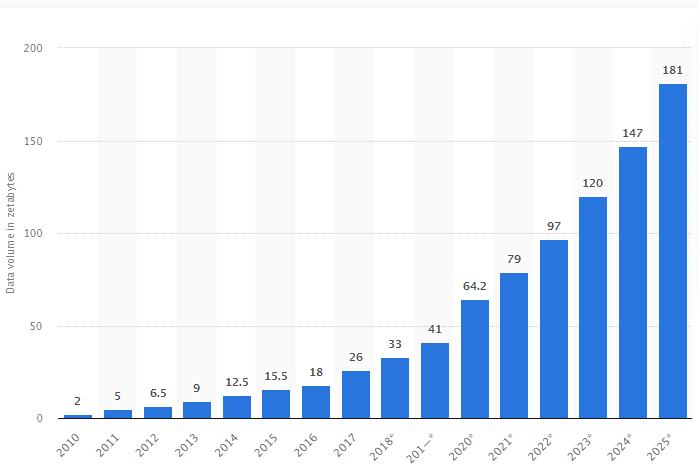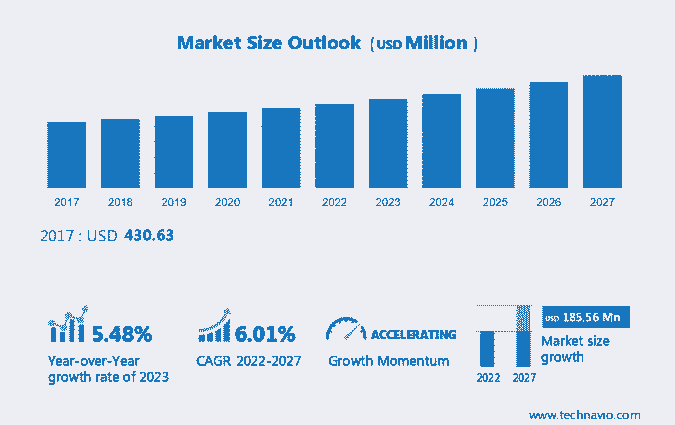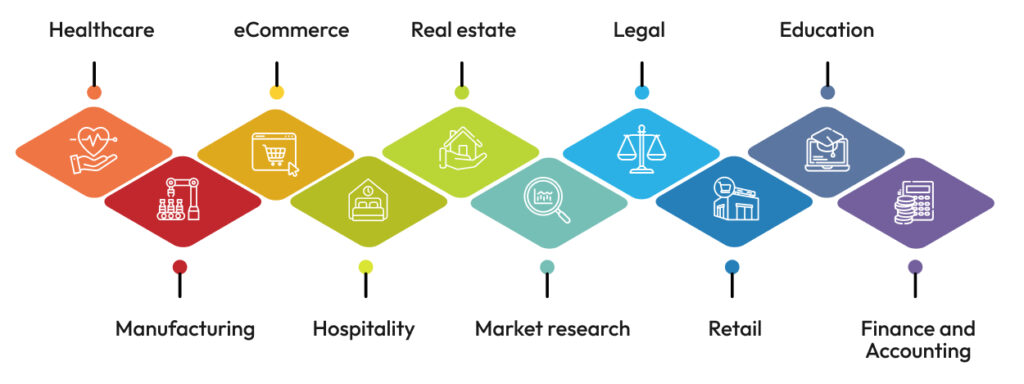
In 2023, the global volume of data created, captured, copied, and consumed has reached a staggering 120 zettabytes. This number is expected to skyrocket to 181 zettabytes by 2025.

This exponential growth underscores an era where data, in all its forms, plays a vital role in enabling businesses to understand their customers, optimize their operations, and explore new opportunities. However, this immense data flow brings a significant challenge related to its management and organization.
This is where data entry services become crucial, providing much-needed support to organizations seeking to cope with data overload by accurately converting and entering information from various sources into digital formats to
- Help businesses maintain organized and up-to-date records for efficient operations.
- Provide the foundation for data-driven decision-making, enabling businesses to make informed choices about their products, services, and strategies.
- Ensure compliance with data protection regulations to protect customer privacy and build trust.
The expanding market for data entry solutions
The demand for data entry services has experienced a significant upsurge in recent years and will continue to (as shown below).

This can be attributed to several factors:
1. Data overload
Businesses are inundated with vast amounts of data. From customer records to product inventory, the sheer volume of data requires efficient data entry and management for informed decision-making, regulatory compliance, and strategic planning.
2. Focus on core competencies
Many businesses have shifted their resource allocation strategy to focus on core competencies, leading to a growing trend of outsourcing non-core activities like data entry. This frees up time and workforce for businesses to prioritize their primary functions and unique value propositions.
3. The rise of eCommerce
Online retailers deal with endless products, customer orders, and inventory data. Efficient data entry is vital for cataloging products, managing sales, and ensuring a seamless online shopping experience.
4. Globalization
The need for multilingual data entry has grown with businesses expanding into global markets. Companies must convert diverse data into a universally accessible format, emphasizing the role of data entry services in maintaining data consistency across international operations.
The most common types of data entry solutions
|
Data Entry Solutions for Diverse Industries

Healthcare
- Patient records: Accurate entry of patient information, medical history, and treatment records.
- Billing and claims: Data entry for billing and insurance claims processing.
- Medical research: Entering data from clinical trials and research studies.
eCommerce
- Product catalog: Updating and managing product descriptions, prices, and availability.
- Inventory: Recording stock levels and updating all the values.
- Order: Inputting customer orders and shipping details.
Finance and Accounting
- Transaction data: Entering financial transactions, payments, and receipts.
- Invoices and statements: Inputting data from invoices, bank statements, and financial reports.
- Tax documents: Data entry for tax filings and compliance records.
Real estate
- Sales records: Entering data for property sales and leasing agreements.
- Client information: Inputting client contact details and preferences.
Legal
- Legal documents: Data entry of legal contracts, agreements, and case files.
- Case records: Entering case notes, client details, and court documents.
Market research
- Survey data: Entering responses from surveys, questionnaires, and feedback forms.
- Research studies: Transcribing data from market research and studies.
- Data analysis: Preparing data for analysis and reporting.
Education
- Student records: Recording student information, grades, and attendance records.
- Administrative data: Inputting administrative tasks, schedules, and resource allocation information.
- Curriculum: Data entry for course details and curriculum updates.
Manufacturing
- Inventory: Inputting inventory levels, supply orders, and raw materials data.
- Production planning: Data entry for production schedules and work orders.
- Quality control: Recording quality assurance data and product testing results.
Retail
- Sales records: Entering sales transactions, customer purchases, and refunds.
- Inventory updates: Recording product stock levels, pricing, and restocking.
- Customer information: Inputting customer profiles and preferences.
Hospitality
- Reservation: Entering data related to guest reservations, room assignments, and check-in details.
- Guest information: Entering guest profiles, preferences, and special requests.
- Billing and invoicing: Recording guest billing, charges, and payment records.
Reasons why most of the companies outsource (and must outsource) data entry services

1. Cost efficiency
The costs of recruiting and training in-house staff or maintaining the latest software and tools can be relatively high. However, outsourcing proves to be cost-efficient by giving you access to experts and tools at economical prices.
2. Data accuracy
Professional data entry service providers have dedicated resources who implement rigorous quality control measures to ensure data accuracy and reliability. This can help reduce errors and improve the quality of your data.
3. Data security
Reputable outsourcing companies have robust security protocols to protect your sensitive data, reducing the risk of data breaches and ensuring confidentiality.
4. Scalability
You can scale up or down your data entry requirements to meet seasonal or fluctuating demands without the challenges of hiring and laying off in-house staff.
5. Disaster recovery
Outsourcing companies often have robust disaster recovery plans, ensuring your data remains accessible during unforeseen disruptions.
Additional benefits of outsourcing data entry:
- Productivity: Your in-house staff can focus on more important tasks while experts handle the data entry work. For instance, marketing teams can focus on developing and executing campaigns, leaving data input tasks, such as updating customer contact information or campaign performance metrics, to professionals.
- Employee morale: Outsourcing data entry relieves employees of repetitive and monotonous tasks, allowing them to tackle more fulfilling responsibilities. Consider a financial services firm where the in-house team is often engaged in complex financial analysis. By outsourcing routine data entry tasks, such as data input for expense reports, employees can dedicate their time to analytical work, leading to increased job satisfaction and morale.
- Customer service: Outsourcing data entry helps you get accurate and up-to-date data, improving customer service. For instance, an eCommerce business with updated product catalog data can provide customers with real-time product availability, timely order updates, and personalized recommendations.
Discover how an Italian company generated accurate and timely heating system reports by leveraging multilingual data entry & processing services.
Selecting the right data entry outsourcing partner – Pre and post-partnership considerations
When selecting an outsourcing partner for data entry, it’s crucial to weigh critical factors for an informed decision. Furthermore, ensuring effective collaboration is essential to achieving your desired outcomes.
Factors to consider before collaborating
1) Experience and expertise
Assess the partner’s industry-specific experience and track record in handling similar data entry projects.
2) Data security and compliance
Verify the partner’s data security measures, including encryption, access controls, and compliance with relevant regulations like GDPR or HIPAA.
3) Quality assurance processes
Inquire about the partner’s quality control methods, accuracy checks, and data validation procedures.
4) Pricing models
Understand the pricing structure and evaluate it in terms of value for the quality of service provided.
5) Communication and reporting
Confirm the partner’s communication channels, update frequency, and regular performance reports availability.
6) Cultural fit
Evaluate whether the partner’s work culture and values align with your company’s expectations and requirements.
Factors to consider after collaborating
1) Communication
- Maintain open and transparent communication channels with your outsourcing partner.
- Schedule regular meetings and updates to discuss project progress, challenges, and changes in requirements.
2) Performance monitoring
- Continuously monitor the performance of your outsourcing partner to ensure they meet service level agreements (SLAs) and quality standards.
- Establish key performance indicators (KPIs) to evaluate their efficiency and accuracy.
3) Feedback and improvement
- Provide constructive feedback to the service provider to address any issues/areas that need improvement.
- Collaborate on finding solutions and making necessary adjustments to enhance efficiency.
4) Scalability and flexibility
- Continually assess whether the outsourcing partner can adapt to project scope, volume, or requirements changes.
- Plan for potential scaling or downsizing needs and communicate them to the partner.
5) Performance review and renewal
- Periodically review the partnership to assess its overall value and the return on investment.
- Consider contract renewal or renegotiation based on performance and evolving business needs.
What’s coming in for you?
As we navigate the nature of data entry services, it’s evident that this field is far from static. Future trends in data entry are expected to be characterized by integrating advanced technologies such as AI and machine learning, resulting in even greater efficiency and accuracy. The growing need to outsource these services will become increasingly apparent as businesses seek cost-effective solutions that maintain quality.
For those considering the shift toward outsourcing data entry or seeking more detailed insights, our experts are here to provide invaluable guidance and assistance. We offer a free consultation to help you make informed decisions about your data entry needs, ensuring a seamless transition into a future where data accuracy, efficiency, and management will be more critical than ever.

